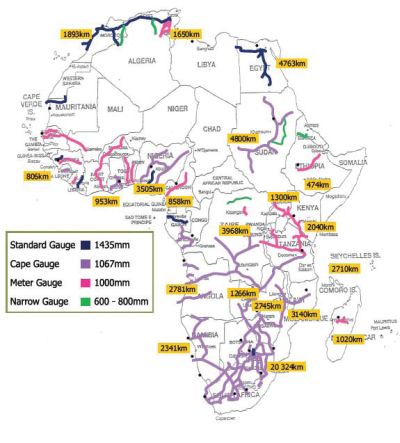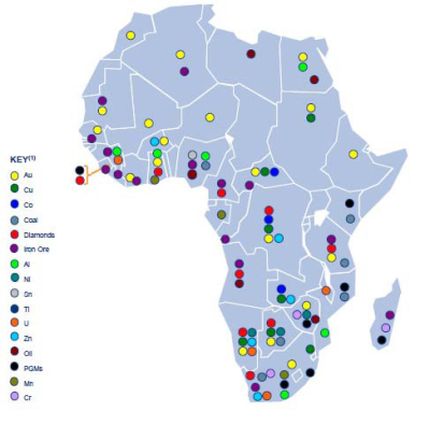The scale of opportunity in the rail sector in Africa is vast. As the world's prosperity grows and new markets develop, the demand for minerals and other resources increases. Until now, much of Africa's mineral wealth has stayed stubbornly in Africa and this is perhaps due, in no small part, to lack of joined-up rail infrastructure.
Heavy haul rail is, of course, not the only means of transporting minerals. However, once implemented it is probably the most efficient means of moving bulk materials and if Africa's mineral resources are to be unlocked then heavy haul rail will have its part to play. Indeed, some commentators believe that a comprehensive heavy haul network could make the difference between a valuable deposit and "expensive dirt". To unlock resources of the scale available in Africa, it is likely that over 2-3000km of new rail with be needed which, for the track alone, carries a price tag of over $25bn.
The existing network
Africa's railways are often unconnected and are of mixed gauge. There is a concentration of cape gauge railway (1067mm) in southern Africa but elsewhere there are isolated lines of standard gauge (1435mm), cape gauge, meter gauge (1000mm) and narrow gauge (600-800mm) (see Figure 1).
Figure 1

Heavy haul rail is essentially defined as rail with an axle loading of 25 tonnes or more which is hauling at least 20 million gross tonnes per annum or in excess of 5000 gross tonnes per train. It requires rail of at least standard gauge and very little of Africa's railway meets this requirement. In fact, only 10% of Africa's 80,000km of rail is heavy gauge. Figure 2 shows the breakdown of rail type by African region from which it is clear that as things stand, heavy haul makes a very modest contribution to the overall rail freight market.
Figure 2

Intergovernmental cooperation
Figure 3 identifies the minerals to be found in each country. Some of these are more sensibly carried by other means (in some cases, plane) but the train is often the better means of transport. Where a mineral rich country is on the coast then it ought to be possible to get the minerals to market without the need for any intergovernmental cooperation. Landlocked countries will not have this luxury and reaching a profit sharing agreement could be difficult when both parties effectively have a veto.
Figure 3

Even where a country is not landlocked, intergovernmental cooperation could be beneficial to develop a railway network (rather than a series of unconnected railways) and to ensure that new railways are developed to common standards and to a common programme so that an interoperable network can be created in due course.
Finance
Passenger rail systems generally have two main sources of revenue – the passenger (through paying fares) and the host government. It is rare for passenger revenue to be sufficient to fund the development, maintenance and operation of the system so government support is often required in order for it to be viable. Whether a heavy haul railway will be financially viable will depend on the economics of the scheme, such as the distance to be covered, the terrain and the type and quantity of the minerals to be transported. Other non-railways costs will also be relevant including the other costs of getting the minerals to market (such as the mining costs and the costs of developing and operating a port). What can set freight railways apart from passenger railways is that the economics can work in favour of the freight system as a whole so that it is economic to develop and operate the necessary infrastructure in order for the minerals to find a market.
The economics of a scheme can be improved considerably if it can be utilised by more than one mining company. This is possible where mines are close together or they are located close to a line between the furthest to port and the port. When this happens, the costs of developing and operating a system can be shared but this will bring with it its own difficulties. For example, the operators will have to share a facility and will have to consider what will happen if one of them ceases to use it. A system of regulation may therefore be required which will add an unwelcome layer of complexity, particularly if the system travels through more than one country.
A further option is for the line to be mixed use in terms of freight and passenger transport although this may not be feasible, particularly as passengers favour fast trains which stop and freight users favour slow trains which do not.
The content of this article is intended to provide a general guide to the subject matter. Specialist advice should be sought about your specific circumstances.
